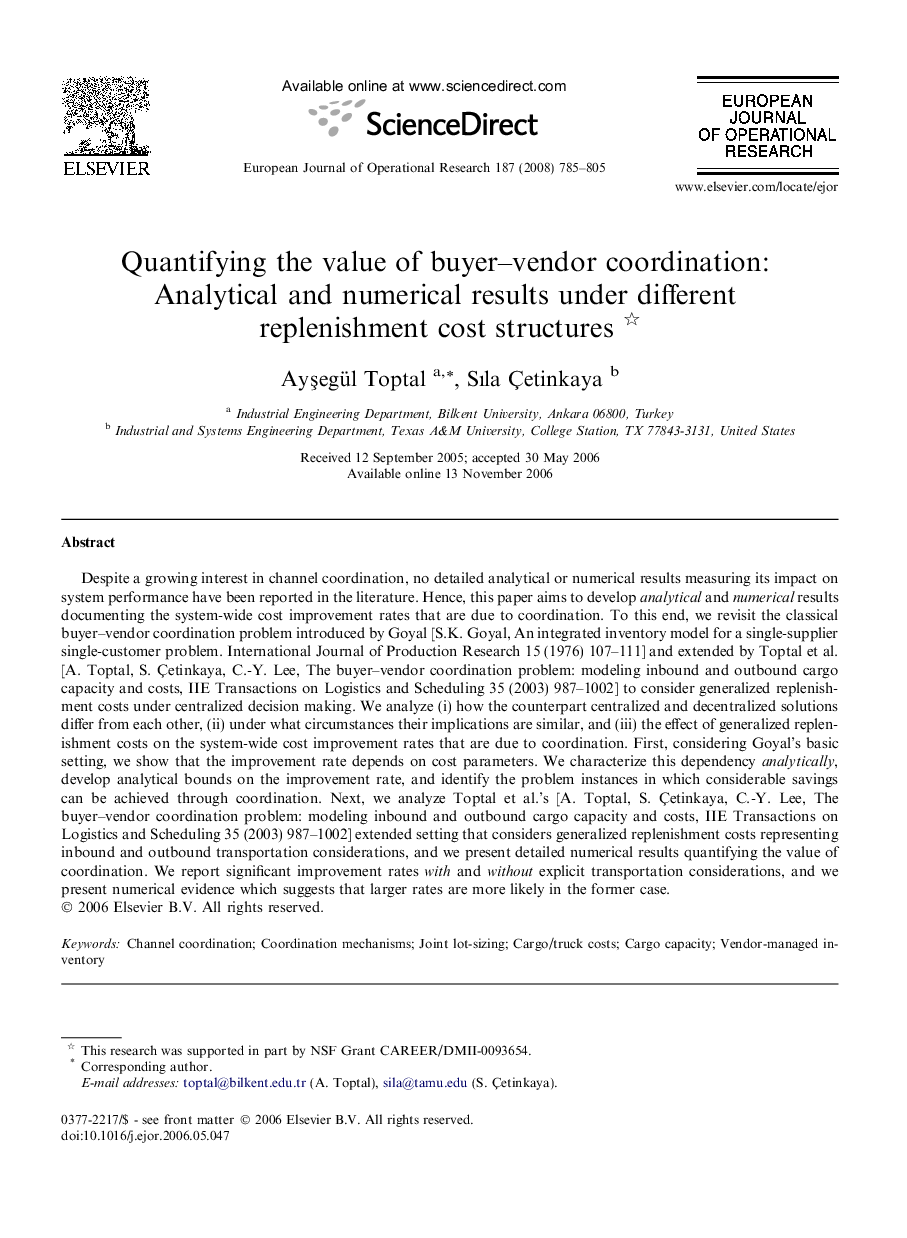| Article ID | Journal | Published Year | Pages | File Type |
|---|---|---|---|---|
| 477627 | European Journal of Operational Research | 2008 | 21 Pages |
Despite a growing interest in channel coordination, no detailed analytical or numerical results measuring its impact on system performance have been reported in the literature. Hence, this paper aims to develop analytical and numerical results documenting the system-wide cost improvement rates that are due to coordination. To this end, we revisit the classical buyer–vendor coordination problem introduced by Goyal [S.K. Goyal, An integrated inventory model for a single-supplier single-customer problem. International Journal of Production Research 15 (1976) 107–111] and extended by Toptal et al. [A. Toptal, S. Çetinkaya, C.-Y. Lee, The buyer–vendor coordination problem: modeling inbound and outbound cargo capacity and costs, IIE Transactions on Logistics and Scheduling 35 (2003) 987–1002] to consider generalized replenishment costs under centralized decision making. We analyze (i) how the counterpart centralized and decentralized solutions differ from each other, (ii) under what circumstances their implications are similar, and (iii) the effect of generalized replenishment costs on the system-wide cost improvement rates that are due to coordination. First, considering Goyal’s basic setting, we show that the improvement rate depends on cost parameters. We characterize this dependency analytically, develop analytical bounds on the improvement rate, and identify the problem instances in which considerable savings can be achieved through coordination. Next, we analyze Toptal et al.’s [A. Toptal, S. Çetinkaya, C.-Y. Lee, The buyer–vendor coordination problem: modeling inbound and outbound cargo capacity and costs, IIE Transactions on Logistics and Scheduling 35 (2003) 987–1002] extended setting that considers generalized replenishment costs representing inbound and outbound transportation considerations, and we present detailed numerical results quantifying the value of coordination. We report significant improvement rates with and without explicit transportation considerations, and we present numerical evidence which suggests that larger rates are more likely in the former case.
